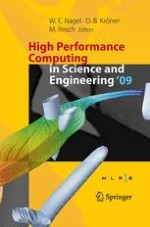2010 | Buch
High Performance Computing in Science and Engineering '09
Transactions of the High Performance Computing Center, Stuttgart (HLRS) 2009
herausgegeben von: Wolfgang E. Nagel, Dietmar B. Kröner, Michael M. Resch
Verlag: Springer Berlin Heidelberg
